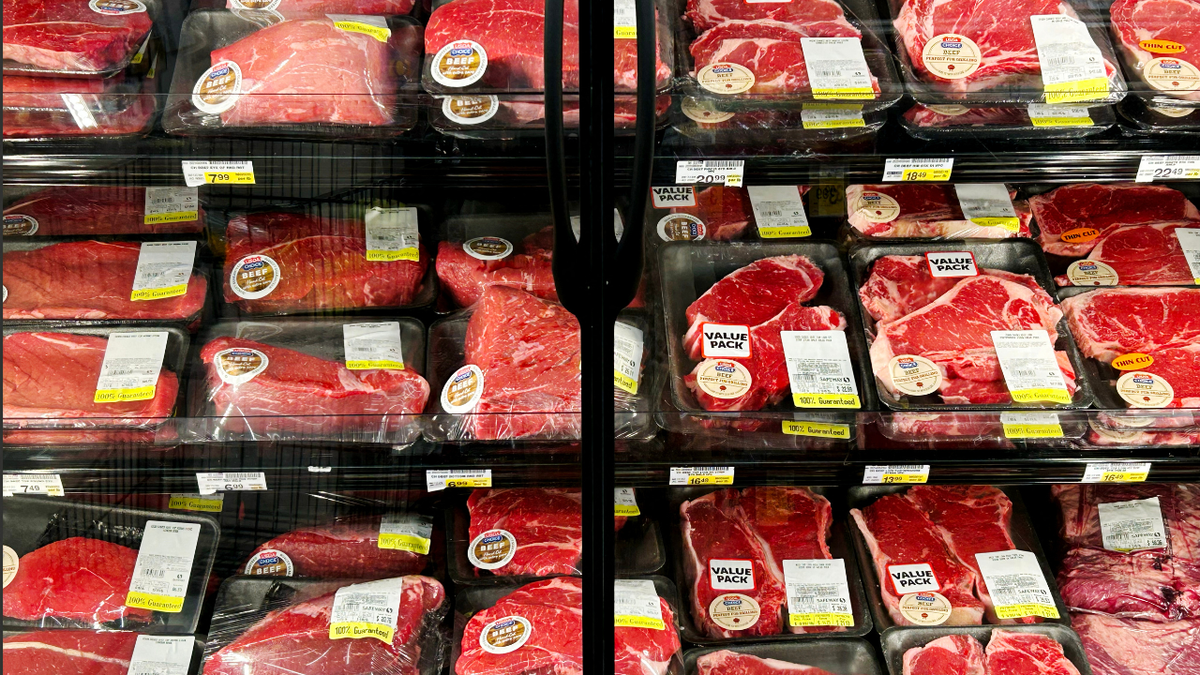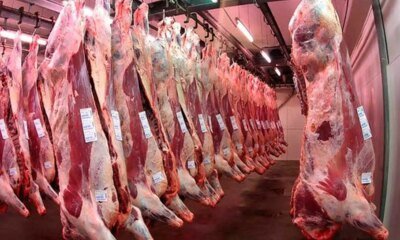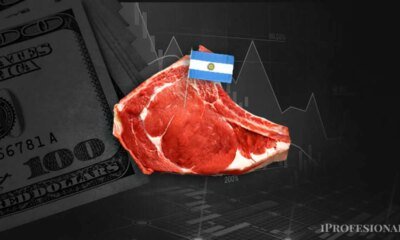INTERNACIONAL
Una asesina disfrazada de payaso y un crimen que pasó 27 años sin ser resuelto: el oscuro caso de Marlene Warren

En la mañana del 26 de mayo de 1990, Marlene Warren abrió la puerta de su casa en Florida, Estados Unidos, y se encontró con una mujer disfrazada de payaso que le ofrecía un ramo de flores y unos globos.
“Qué bonito”, fue su respuesta sin saber a qué se debía la visita. Sin embargo, esa no fue la única sorpresa que recibió, ya que, en cuestión de segundos, sufrió un disparo en la cara frente a su hijo de 21 años y sus amigos.
Leé también: Un matrimonio secuestró a una joven y la encerró en una caja de madera durante siete años para abusar de ella
La dramática escena causó terror entre los vecinos de la localidad de Wellington, debido a que el caso estuvo sin resolverse por décadas. Pero todo cambió en 2017, cuando la policía logró identificar a la asesina y revelar la oscura trama detrás del crimen.
La amante
Al momento del hecho, Joseph Ahrens, el hijo de Marlene de otra pareja, estaba en su casa cuando una mujer disfrazada de payaso tocó el timbre. Llevaba una peluca naranja, una nariz roja y un ramo de flores con globos, junto a una tarjeta que decía “sos la mejor”.
Luego del crimen, mientras el chico asistía a su madre, la sospechosa se fue corriendo y se dio a la fuga en un auto Chrysler blanco sin patente. A pesar del impacto por el atroz crimen, el testimonio de Joseph y el de sus amigos -que también estaban presentes- fueron fundamentales para el avance de la investigación.
Por otra parte, una vecina que fue testigo del asesinato llamó a la policía y una ambulancia trasladó a Marlene de urgencia a un hospital de Palm Beach. Si bien estuvo internada por dos días, falleció a causa de la gravedad de las heridas. La entrada de la casa de Marlene Warren donde ocurrió el crimen. (Foto: Policía del Condado de Palm Beach)
Entre las primeras pistas que los investigadores descubrieron, se supo que la relación entre Marlene y su esposo Michael Warren no había sido la mejor en los últimos meses. Por este motivo, las sospechas recayeron, en un principio, en el hombre.
La policía confirmó que su coartada era verdadera, debido a que, al momento del brutal asesinato, Michael estaba junto a unos amigos. Sin embargo, los agentes no creían que estuviera desligado del hecho en su totalidad.
Esto se confirmó cuatro días más tarde cuando encontraron un Chrysler blanco -el mismo modelo de auto que había usado la homicida- en el estacionamiento de vehículos usados del que Warren era dueño. En su interior, los peritos hallaron las fibras de lo que parecía ser una peluca naranja.
Los investigadores indagaron más en la vida de Michael y descubrieron un dato que resultó de interés: el esposo de la víctima mantenía una relación extramatrimonial con una mujer llamada Sheila Keen, quien trabajaba junto a él como recepcionista. De esta manera, se convirtió en la principal sospechosa del caso. Marlene Warren junto a su esposo Michael poco antes del asesinato. (Foto: ABC News)
La principal hipótesis era que Michael y Sheila habían planeado el crimen para poder quedarse con el dinero del seguro de vida de Marlene, y así comenzar una nueva vida como pareja. Pero, a pesar de ello, siempre negaron las acusaciones.
En línea con esta teoría, se detectaron algunas pistas que podrían reforzarla. La dueña de un cotillón aseguró haber atendido a una mujer con las características físicas de Keen que había comprado un disfraz de payaso. A su vez, otros testigos afirmaron haber visto a alguien similar en un comercio que vendía flores y globos el mismo día.

Desde el principio, Sheila Keen fue la principal sospechosa del caso. (Foto: CBS News)
Sin embargo, estas pruebas no resultaron suficientes para que la fiscalía pudiera formalizar las acusaciones en contra de Michael Warren y Sheila Keen, por lo que la causa se archivó.
Una prueba de ADN clave
Durante años, el caso estuvo sin resolver, pero volvió a reabrirse en 2017, cuando un grupo de periodistas del medio Sun Sentinel investigaron el crimen por su cuenta y dieron a conocer un detalle que encendió las alarmas: Michael y Sheila se habían casado en 2002, luego de haber negado cualquier tipo de vínculo amoroso entre ellos.
Por otra parte, se supo que ambos se habían mudado a Virginia y que habían abierto un local de comida rápida. Además, resultó sospechoso que Sheila había comenzado a llamarse “Debbi” y que se tiñera el pelo de rubio.

Michael Warren y Sheila Keen se casaron en 2002. (Foto: Sun Sentinel)
Con esta información, los investigadores desarchivaron el caso y, gracias a los avances en la tecnología, analizaron las fibras halladas en el Chrysler blanco en busca de pistas que esclarezcan los hechos. Allí, encontraron rastros de ADN que luego se cotejó con el material genético de Keen.
El resultado dio positivo y fue así cómo los policías obtuvieron las pruebas suficientes como para acusar a la mujer. Poco después, Sheila Keen-Warren fue detenida el 26 de septiembre de 2017 e imputada por homicidio en segundo grado.
Leé también: Una mujer mató a sus hijos para ponerse de novia con un hombre que no quería ser padre: el caso de Susan Smith
La condena
El fiscal a cargo del caso, Dave Aronberg, junto a la aprobación de la familia de Marlene, pidió la pena de muerte para Sheila Keen, pero justo antes de que comenzara el juicio por el crimen, la mujer confesó su autoría en el asesinato en 2023.
Si bien siempre sostuvo su inocencia, aceptó el acuerdo con la fiscalía para evitar una posible cadena perpetua. Por este motivo, fue sentenciada a 12 años de cárcel, pero como ya llevaba siete detenida y acumuló beneficios por buen comportamiento, salió en libertad en noviembre del año pasado.
“Siempre será una asesina confesa y llevará esa mancha todos los días por el resto de su vida”, expresó el fiscal Aronberg ante la decisión de la Justicia.
Estados Unidos, Asesinato, amante
INTERNACIONAL
US kills 6 suspected narco-terrorists in overnight strike on alleged drug smuggling boat, Hegseth says

NEWYou can now listen to Fox News articles!
President Donald Trump directed a nighttime U.S. strike on a suspected Tren de Aragua vessel in the Caribbean Sea, killing six alleged narco-terrorists, officials say.
«Overnight, at the direction of President Trump, the Department of War carried out a lethal kinetic strike on a vessel operated by Tren de Aragua (TdA), a Designated Terrorist Organization (DTO), trafficking narcotics in the Caribbean Sea,» War Secretary Pete Hegseth announced on X sharing an accompanying video of the strike. «The vessel was known by our intelligence to be involved in illicit narcotics smuggling, was transiting along a known narco-trafficking route, and carrying narcotics.»
«Six male narco-terrorists were aboard the vessel during the strike, which was conducted in international waters — and was the first strike at night,» he said. «All six terrorists were killed and no U.S. forces were harmed in this strike.»
HEGSETH SAYS US CONDUCTED ANOTHER STRIKE IN EASTERN PACIFIC TARGETING ALLEGED NARCO-TRAFFICKERS
This infrared image released by the Department of War shows a suspected Tren de Aragua vessel in international waters of the Caribbean Sea before a U.S. nighttime strike that killed six alleged narco-terrorists, officials said. (Department of War/Pete Hegseth)
Hegseth further warned, «If you are a narco-terrorist smuggling drugs in our hemisphere, we will treat you like we treat [al Qaeda]. Day or NIGHT, we will map your networks, track your people, hunt you down, and kill you.»
The strike marks the 10th operation targeting suspected drug traffickers since Trump returned to office. The president has made combating the nation’s drug crisis a central policy focus.
The first strike took place on Sept. 2, and since then, 43 suspected drug traffickers have been killed and two have survived, officials said. The pace of the strikes has increased from one every few weeks in September to three so far this week.
The operations have mostly targeted vessels linked to Venezuela’s Tren de Aragua network. The missions have ranged from attacks on smuggling boats to the destruction of a submersible, with footage of several operations released by Hegseth and Trump on social media.
TRUMP APPROVES MILITARY ACTION AGAINST LATIN AMERICAN CARTELS CLASSIFIED AS TERRORIST ORGANIZATIONS

War Secretary Pete Hegseth announced the latest strike Friday morning. (Andrew Harnik/Getty Images )
When reporters asked Trump on Thursday whether he would request Congress issue a declaration of war against the cartels, he said that wasn’t the plan.
«I think we’re just going to kill people that are bringing drugs into our country, OK? We’re going to kill them, you know? They’re going to be like, dead,» Trump said during a roundtable at the White House with homeland security officials.
Trump this month declared drug cartels to be unlawful combatants and said the U.S. was in an «armed conflict» with them.
Members of Congress from both sides of the aisle are questioning Trump’s decision to launch the operations without first consulting lawmakers. Several Democrats are warning that the strikes could breach international law.
Sen. Rand Paul, R-Ky., has also raised concerns about killing people without due process and the possibility of killing innocent people.
CLICK HERE TO GET THE FOX NEWS APP

An infrared image released by the Department of War shows debris and smoke following a nighttime strike on a suspected Tren de Aragua vessel in international waters of the Caribbean Sea. Officials said six alleged narco-terrorists were killed in the operation. (Department of War)
In a recent interview, Paul cited Coast Guard statistics that show a significant percentage of boats boarded for suspicion of drug trafficking are innocent.
The senator has also argued that if the administration plans to engage in a war with Venezuela, as it has targeted boats in recent weeks it claims are transporting drugs for the Venezuela-linked Tren de Aragua gang, it must seek a declaration of war from Congress.
Fox News’ Landon Mion and The Associated Press contributed to this report.
narco terror,military,pete hegseth,donald trump,secretary of defense,world,drugs
INTERNACIONAL
Trump’s beef import plan ignores key issue squeezing American cattle ranchers

NEWYou can now listen to Fox News articles!
While President Donald Trump’s proposal to import more beef from Argentina is billed by the administration as a way to bring down prices for American consumers, critics say it misses the real issue driving costs at the grocery store: corporate concentration in the U.S. meatpacking industry.
Four corporations — Tyson, JBS, Cargill and National Beef — anchor the U.S. beef supply chain, with pricing power that reaches from pasture to plate. As a result, the gap between what producers are paid for cattle and what consumers spend on beef has remained wide, a reflection, economists say, of how market power is distributed along the supply chain.
Fox News Digital reached out to all four companies for comment but did not receive a response as of publication.
TRUMP ADMIN EYES ARGENTINE BEEF IMPORTS AS DOMESTIC PRICES SOAR TO RECORD HIGHS
Some critics argue the real problem isn’t about supply, it’s the corporate giants controlling America’s meat industry. (Melina Mara/The Washington Post/Getty Images)
The frustration extends beyond farm country – Rep. Thomas Massie, R-Ky., says the dominance of multinational meatpackers is hurting both producers and consumers.
«Four corporations control 85% of the meat sold in the United States. One of these corporations is Chinese-owned and one is Brazilian-owned. American farmers are being squeezed and American consumers are being gouged,» Massie told Fox News Digital.
Massie, who raises cattle on his Kentucky ranch, warned that expanding beef imports from Argentina would only worsen those structural problems.
«Flooding the market with Argentinian beef is not the answer to these problems. An America First solution to rising beef prices is to pass my PRIME Act, which would empower American farmers to sell directly to consumers without interference from global corporate middlemen,» Massie said.
Under current federal law, beef processed at small, state-inspected facilities can’t be sold across state lines, even if it meets the same health standards as federally inspected meat. Massie’s PRIME Act would remove that barrier, a change supporters say would let local ranchers reach more consumers and compete with the big packers.
GOP LAWMAKERS WARN TRUMP’S ARGENTINA BEEF PROPOSAL COULD RATTLE US RANCHERS

Agriculture Secretary Brooke Rollins recently unveiled a plan aimed at strengthening the U.S. cattle industry. (Ty Wright/Bloomberg/Getty Images)
Economists agree the beef market is highly consolidated, but say the forces shaping prices go well beyond any one trade deal.
Glynn Tonsor, a professor of agricultural economics at Kansas State University, told Fox News Digital that strong consumer demand continues to drive beef prices higher, regardless of supply fluctuations.
«There’s nothing that forces me or you or anybody else when we go into the grocery store to pay more for beef. People are choosing to,» he said. «The consumer desire for beef is strong and, regardless of the supply-side situation, that has the effect of pulling prices up.»
He also noted that the large-scale structure of the U.S. meatpacking industry, often criticized by ranchers and lawmakers, has economic benefits for consumers.
«I would argue that those economies of scale benefit consumers,» Tonsor said. «The ability to operate at a cheaper cost per head and, ultimately, per pound produced gives us the ability to offer beef and every other item we’re talking about at a cheaper price. Anything we do that loses those economies of scale actually hurts consumers in the form of higher prices.»
FROM CATTLE TO CRUDE: HOW TRUMP’S TARIFFS ARE RATTLING THE LONE STAR STATE

The White House has previously said that importing beef will help address the rising food costs in the U.S. (Jim Watson/AFP/Getty Images)
Derrell Peel, a professor of agricultural economics at Oklahoma State University, said that even if U.S. imports from Argentina increase, the impact on overall prices would be negligible.
«Most of what we import is lean, processed beef trimmings used for ground beef,» said Peel, who specializes in livestock marketing. «We’re not talking about the kind of beef that affects steak prices. Even if we doubled imports, it would be such a small share of the total supply that we wouldn’t detect any real impact.»
Peel added that there’s no quick way to ease pressure on cattle prices, since it takes roughly two years to bring animals to market and several years to rebuild herds.
«The fact of the matter is there’s really nothing anybody can do to change this very quickly,» he said. «We’re in a tight supply situation that took several years to develop, and it’ll take several years to get out of it.»
BEEF PRICES HIT RECORD HIGHS AS NATIONWIDE CATTLE INVENTORY DROPS TO LOWEST LEVEL IN 70 YEARS

Economists say there’s no quick way to ease pressure on cattle prices or beef. (Ricky Carioti/The Washington Post/Getty Images)
CLICK HERE TO GET THE FOX NEWS APP
Meanwhile, the White House defended the plan, saying it’s aimed at balancing relief for consumers with long-term support for U.S. cattle producers.
«The president loves our ranchers, and he also loves American consumers, and he wants to do right by both,» White House press secretary Karoline Leavitt said on Wednesday.
Leavitt said Trump’s immediate goal is to lower beef prices by increasing supply through additional imports, while a separate, long-term plan will focus on strengthening the domestic cattle industry.
She pointed to a three-part plan announced by Agriculture Secretary Brooke Rollins, which includes expanding grazing access, easing regulations for new ranchers, cutting inspection costs and improving «Product of USA» labeling to ensure consumers know when they’re buying American-made beef.
trade,texas,finance global economy,south america,white house,republicans elections
INTERNACIONAL
Una mujer estuvo cinco años secuestrada en un garaje por una pareja: le daban papilla con detergente y le vaciaron la cuenta

Una mujer de unos 40 años estuvo secuestrada durante cinco años por su propia compañera de casa y la pareja de esta, quienes la sometieron a torturas y la despojaron de todos sus bienes. El caso estremecedor ocurrió en la tranquila localidad de Saint-Molf, un pueblito de apenas 2800 habitantes del oeste de Francia, que quedó conmocionado.
El calvario terminó el 14 de octubre, cuando la víctima logró escapar y pedir ayuda a los vecinos. El caso salió a la luz y la Fiscalía de Nantes imputó a la pareja por “secuestro con tortura”.
Leé también: Horror en Brasil: un hombre mató a su exnovia trans a golpes y pisotones en la cabeza
Cinco años de encierro y maltratos
Todo comenzó cuando la víctima compartía la casa con una mujer de unos 60 años, que trabajaba como auxiliar de enfermería en un hospital. La situación cambió cuando la mujer llevó a vivir a su pareja, un hombre de 82 años. Desde ese momento, la víctima fue aislada, encerrada y despojada de su dinero y ayudas sociales.
Según el relato de la propia víctima, primero la obligaron a vivir en una carpa en el jardín y, más tarde, la encerraron en el garage. “Dormía en una reposera, hacía sus necesidades en un balde y bolsas de plástico, y comía papilla mezclada con detergente”, detalló el fiscal de Nantes, Antoine Leroy.
A la víctima le vaciaron la cuenta. (Foto: AFP/Sébastien Salom-Gomis).
Durante años, la mujer soportó el frío, la lluvia y el hambre, y solo en contadas ocasiones pudo salir al exterior. Desde 2022, no hubo más rastros de su vida: sus cuentas bancarias quedaron vacías y los últimos movimientos fueron transferencias a la cuenta de la acusada, informó la radio France Bleu.
Leé también: Una mujer irá a la cárcel por la muerte de su bebé: lo dejó solo con un pitbull peligroso que lo mató
La fuga desesperada y el rescate
La pesadilla terminó la noche del 14 de octubre, después de la cena. La víctima aprovechó que el hombre miraba televisión para salir del encierro y tocar timbre a los vecinos hasta que uno le abriera la puerta.
Cuando la policía llegó, encontraron a una mujer extremadamente delgada, con casi 50 kilos menos, en estado de hipotermia y con signos de haber sido drogada y mal alimentada. Detras de los inocentes muñecos de jardín, el horror. (Foto: captura de video AFP).
“La bañaban con lavandina, le ponían detergente en la comida y la drogaban con remedios”, reveló una fuente cercana a la investigación. En la casa, los gendarmes hallaron pruebas contundentes: la puerta del garage bloqueada desde afuera con bloques de cemento.
La mujer fue hospitalizada y el médico que la atendió le prescribió al menos 30 días de incapacidad total de trabajo por las secuelas físicas y psicológicas.
El silencio del pueblo y la investigación en marcha
El caso dejó muchas preguntas sin respuesta. ¿Cómo pudo pasar desapercibido tanto tiempo? El intendente de Saint-Molf, Hubert Delorme, aseguró que no conocía a los habitantes de la casa, aunque admitió que la prefectura lo había alertado porque la inquilina no pagaba el alquiler desde hacía un año y medio y estaba bajo proceso de desalojo.
“Parecía un hombre amable”
En el pueblo, la conmoción es total: “Me enteré a la mañana. Pasó justo al lado de casa, no has escuchado nada, no viste, eso es todo… Es realmente impactante. Vivimos muy cerca y pensar que esto ha ocurrido justo al lado es muy sorprendente. Estamos conmocionados. Creo que nos llevará unos días asimilarlo” dijo una vecina en shock a la agencia de noticias AFP.
Leé también: Condenaron a un dentista que ofrecía blanqueamiento dental gratis a influencers para atraerlas y abusarlas
Otra vecina dijo que el secuestrador, de 82 años, “solía estar en el jardín” y “parecía muy amable”. “Era alguien ameno, hablaba con facilidad”, sostuvo. Detrás de los adornos, un calvario de cinco años. (Foto: captura de video AFP).
El polo criminal de Nantes tomó el caso y la investigación sigue abierta. El fiscal Antoine Leroy confirmó que el matrimonio reconoció las condiciones en las que vivía la víctima, aunque minimizó su responsabilidad.
Ambos fueron imputados por “secuestro con tortura o actos de barbarie” cometidos entre abril de 2022 y el 14 de octubre de 2025, además de “abuso fraudulento del estado de sujeción psicológica o física” y “abuso de debilidad de persona vulnerable” desde 2018.
La mujer acusada quedó detenida y su pareja, bajo control judicial. Podrían ser condenados a cadena perpetua Mientras tanto, la comunidad de Saint-Molf intenta asimilar el horror vivido puertas adentro de una casa común y corriente. “Estamos sorprendidos, acá nunca pasa nada”, dijo otro vecino jubilado.
Francia, tortura, secuestro

 DEPORTE2 días ago
DEPORTE2 días agoUniversidad de Chile vs. Lanús, por la Copa Sudamericana: día, horario y cómo verlo por TV

 CHIMENTOS2 días ago
CHIMENTOS2 días agoAdabel Guerrero confesó de qué famosa está enamorada y que le encantaría tener relaciones: «La China Suárez me sorprendió con su belleza»

 POLITICA2 días ago
POLITICA2 días agoDiego Luciani, sobre la condena a Cristina Kirchner: “No hay sentencia ejemplar sin recuperar lo robado”


























